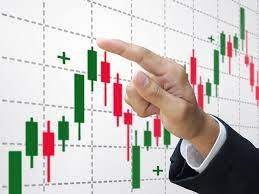CFD is one of the most popular financial instruments used in trading. However, it is also one of the most misunderstood concepts in the financial world. CFD stands for Contract for Difference and it allows traders to speculate on the price movements of various financial instruments without actually owning them. In this blog post, we will demystify cfd how it works in financial trading.
CFD is essentially an agreement between two parties. The first party is the trader who would like to speculate on the price movements of a financial instrument, and the second party is the broker who is willing to take the other side of the agreement. The trader makes a prediction on whether the asset’s price is going to go up or down, and the broker agrees to pay the trader the difference between the current market value of the asset and its value at the end of the agreement period.
One of the most significant advantages of CFDs is that traders can profit from both upward and downward price movements. Additionally, CFDs allow traders to leverage their trades, which means that they can trade a larger position than what they could afford with their current capital. However, it is important to note that leverage can also magnify losses.
CFD trading is very similar to other types of trading, and traders use the same technical and fundamental analysis tools. Traders can trade on a wide range of financial instruments, including stocks, indices, commodities, and forex. Furthermore, CFDs offer various order types, such as market orders, limit orders, stop-loss orders, and take-profit orders.
One of the most significant disadvantages of CFDs is that they are not regulated in some jurisdictions. This means that traders need to be careful when choosing a broker to trade with, as there is a risk of scams and unregulated brokers. Therefore, traders need to do their research and ensure that the broker they choose is reputable and regulated.
Conclusion:
CFD trading is an excellent way for traders to speculate on the price movements of various financial instruments. CFDs offer many advantages, such as leveraged trading, the ability to profit from both upward and downward price movements, and access to a range of financial instruments. However, traders need to be careful when choosing a broker, as there is a risk of scams and unregulated brokers. To conclude, CFD trading can be profitable if traders do their research and understand the risks and opportunities involved in the trading process.
